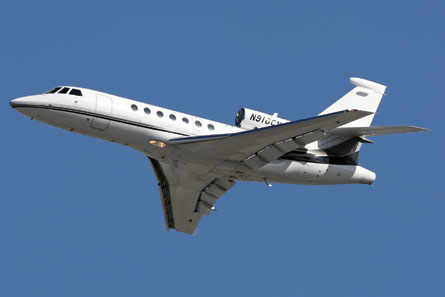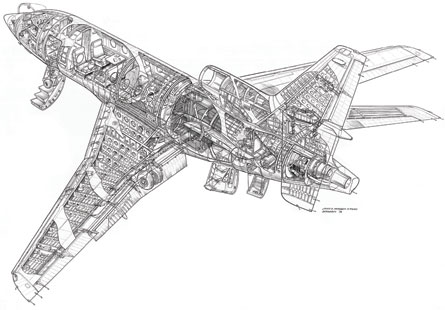The first to conquer the westbound route across the North Atlantic, the Dassault Falcon 50 defined a new standard for long range in business aviation when it arrived in the mid-1970s.
At the time of the Falcon 50's first flight in 1976, it was only 13 years since Dassault had adapted the wing and tail of the Mirage IV fighter into a seemingly timeless twinjet branded the Falcon 20 by US distributor PanAm (but originally called the Mystere 20 in Europe).
During that interval, Marcel Dassault decided the world needed a new business aircraft that could travel non-stop from both sides of the Atlantic with at least the minimum fuel reserves required under Federal Aviation Regulations.
Although retaining the oval cross-section of the Falcon 20, the range requirements of the new jet required substantial design changes.
To travel faster more efficiently, the Falcon 50 was the first non-military aircraft to enter service with the supercritical aerofoil pioneered by NASA engineer Richard Whitcomb, beating its Bombardier Challenger rival with a similar aerofoil to first flight by two years.
Dassault managed to break the long-range barrier without compromising style. With the Falcon 20, Marcel Dassault had set a goal to produce not only a functional aircraft, but un beau petit avion - a good-looking little aircraft. If anything, the addition of the supercritical wing and a third engine with an S-shaped duct through the tail cone to the Falcon 50 improved on that standard.
The mission of transporting business executives belonged first to surplus propeller-driven aircraft. In the early 1960s, the first generation of dedicated business jets took hold, but were often no match for the sophistication of commercial airliners.
With the arrival of the second generation of business jets starting in the mid-1970s, the Falcon 50 pushed the technology and sophistication of this class of aircraft. In many ways, Dassault's super mid-size standard-bearer was more advanced than the new generation of commercial widebodies entering the market at the same time.
 |
|---|
©AirTeam Images |
 |
|---|
©Cutaway DrawingsL John Marsden |
Source: Flight International




















